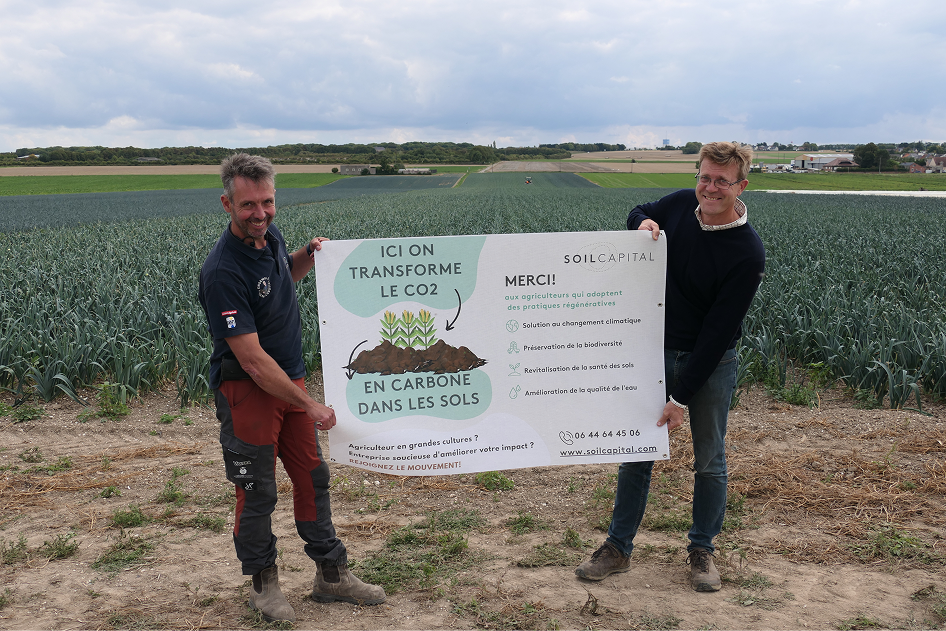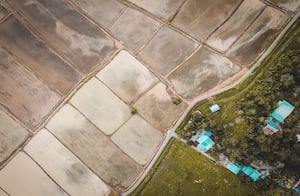Does Regenerative Agriculture Generate Carbon Avoidance or Removal Credits?
Table of Contents
1. How do carbon removal credits work in regenerative agriculture?
2. How do carbon avoidance credits work in regenerative agriculture?
3. How does regenerative agriculture generate various types of carbon credits?
4. How can a buyer claim regenerative agriculture credits?
5. Developed vs Developing Countries - Are they facing the same challenges?
6. How can we get past these challenges in adopting regenerative agriculture?
The voluntary carbon market offers a market-based financial mechanism to fund emission reduction projects in the least developed, developing, and developed countries to address climate change and foster environmental sustainability. This is done through the purchase of carbon credits. Essentially, one carbon credit represents the reduction or removal of one metric ton of carbon dioxide (CO2) or its equivalent in other greenhouse gases (like methane or nitrous oxide). These credits can be bought and sold to help businesses, governments, and organizations account for their residual greenhouse gas emissions.
There are several project typologies that generate carbon credits, which generate either carbon removal, carbon avoidance, or both carbon removal and avoidance carbon credits. For more details on carbon avoidance and removal, check out the differences here.
Regenerative agriculture projects (classified under Nature-based Solutions) have the unique potential to generate both avoidance and removal carbon credits, thanks to the multifaceted ways in which they interact with the carbon cycle. These two types of credits are differentiated by how they contribute to reducing greenhouse gases; avoidance credits prevent emissions that would have otherwise occurred, while removal credits actively take carbon out of the atmosphere and store it in the soil or vegetation.
Regenerative agriculture projects include activities, such as cover cropping, crop rotation, reduced tillage, sustainable use of crop residues, as well as, use of organic fertilizers. By implementing these activities, projects reduce or remove greenhouse gas emissions. Ultimately, these credits are sold in the voluntary market, resulting in an additional income source to farmers, incentivizing them in the first place to carry out these regenerative practices.

How do carbon removal credits work in regenerative agriculture?
Regenerative practices enhance soil health, increase organic matter, and promote carbon sequestration. Healthy soils act like carbon sinks, pulling carbon dioxide out of the atmosphere and storing it underground. These credits are generated when regenerative agriculture practices directly sequester carbon from the atmosphere and store it in the soil, plants, or trees. The carbon removal process can be broken down into several regenerative practices:
Practices that contribute to carbon removal:
- Cover Cropping: Planting crops that grow in between regular cash crops helps build organic matter in the soil, increasing its carbon storage capacity.
- Reduced Tillage: By minimizing soil disturbance, reduced tillage helps preserve soil carbon and reduces the release of previously stored carbon into the atmosphere.
- Composting: Adding organic matter to soils through composting increases soil carbon and microbial activity, which helps lock more carbon in the soil.
- Holistic Grazing: Managed rotational grazing can improve soil health, increase organic matter, and ultimately sequester carbon.
How do carbon avoidance credits work in regenerative agriculture?
Avoidance credits come into play when regenerative agricultural practices prevent the emission of greenhouse gases that would have otherwise been released if conventional, less sustainable farming methods had been used. The focus here is on preventing activities that result in high emissions, such as, the use of synthetic fertilizers, intensive tillage, or monoculture farming.
Practices that contribute to carbon avoidance:
- Reduced Use of Synthetic Fertilizers: Regenerative agriculture typically relies on organic or biological fertilizers (e.g., compost, cover crops) instead of synthetic nitrogen fertilizers, which are a major source of nitrous oxide (a potent greenhouse gas). By cutting down on synthetic fertilizers, emissions of nitrous oxide are avoided.
- Reduced Soil Disturbance (No-Till or Low-Till): Conventional tillage practices release carbon stored in the soil. By avoiding excessive tillage, regenerative practices prevent this carbon from being released into the atmosphere.
- Reduced Use of Pesticides and Herbicides: Many regenerative practices eliminate or reduce the use of chemical pesticides, herbicides, and fungicides, which can contribute to greenhouse gas emissions during their production, transportation, and application.
How does regenerative agriculture generate various types of carbon credits?
Regenerative agriculture has the potential to generate both avoidance and removal credits simultaneously by integrating multiple practices. For instance, a farm might reduce tillage (which avoids emissions), while also planting cover crops or engaging in agroforestry (which removes carbon from the atmosphere and stores it in the soil and vegetation).
The proportion of removal versus avoidance credits generated depends on the specific practices implemented. For example, cover cropping might contribute more to carbon removal, while reduced fertilizer use focuses on carbon avoidance. In any case, combining practices that address both aspects maximizes the farm’s potential to generate a diverse range of carbon credits.

How can a buyer claim regenerative agriculture credits?
As global demand for high-quality carbon credits grows driven by increasing climate commitments from governments and corporations regenerative agriculture has become an attractive option for businesses and organizations aiming to meet their Net-Zero targets and account for their residual emissions beyond their value chains. Since regenerative agriculture projects can generate both avoidance and removal credits, carbon credit standards and registries will need to evolve to distinguish between these two types of emissions reductions, allowing buyers to claim them accordingly.
That said, buyers should recognize that the true value of regenerative agriculture lies in its holistic approach combining practices like cover cropping, reduced tillage, and reduced synthetic fertilizers and pesticides, all of which generate both types of credits. Rather than getting caught up in the distinction between removal and avoidance, buyers should focus on the broader environmental and social benefits that these projects offer, such as improved soil health, biodiversity, and sustainable land management. In doing so, they can feel confident that their investment is making a meaningful contribution to long-term climate goals.
Developed vs Developing Countries - Are they facing the same challenges?
Regenerative agriculture has been gaining momentum across the global agricultural landscape. It extends beyond just restoring soil health, as it also plays a crucial role in enhancing biodiversity, and strengthening food security. An increasing number of farmers, policymakers, and corporations recognize its long-term benefits. Therefore, regenerative agriculture continues to advance through innovation, education, and implementation.
There are various challenges associated with adopting regenerative agriculture practices. For more information on the basics of regenerative agriculture, please read our article.
These challenges vary between developed and developing countries. See how below:
Challenges in Developed Countries
- Economic Pressures: A majority of farmers in developed countries operate on an industrial level, with the intention to rapidly produce foods and services. This encourages a short-sighted mindset, as short-term profitability is prioritized over long-term soil health.
- Policy Incentives: Developed nations typically have more robust governmental support and financial resources to incentivize sustainable practices. Policies such as subsidies, tax breaks, and grants for environmental initiatives encourage farmers to transition to regenerative methods. However, the pace of adoption can still be slow, as these incentives may not always be aligned with the financial pressures of industrial farming.
Challenges in Developing Countries
- Land Tenure & Ownership Issues: In many developing countries, smallholder farmers lack secure land ownership, discouraging long-term investment in regenerative practices. Without guaranteed land rights, farmers are less likely to adopt techniques that take years to yield significant benefits.
- Limited Access to Financing: Transitioning to regenerative agriculture often requires initial investments in soil restoration, agroforestry, and the necessary technology. However, many farmers in developing regions struggle to access financing, and government support programs.
- Infrastructure & Resource Constraints: Limited access to essential resources such as water, quality seeds, and farming equipment makes it difficult for smallholders to implement regenerative techniques effectively.
- Market Access & Supply Chains: Unlike in developed countries, where sustainability-driven consumer demand can drive regenerative agriculture adoption, many developing nations lack established markets that reward regenerative practices. Without reliable buyers or fair pricing mechanisms, farmers may struggle to justify the transition.
Shared Challenges
- Technological & Knowledge Gaps: While developed countries have access to advanced agricultural technologies, many farmers lack the technical knowledge or training to implement regenerative agriculture effectively at scale.
- Supply Chain Transformation: Transitioning to regenerative agriculture requires changes across the supply chain, including adjustments to processing, distribution, and marketing. This transformation can take years to implement.

How can we get past these challenges in adopting regenerative agriculture?
While both developed and developing countries face challenges in adopting regenerative agriculture, there are ways to get past these barriers. In developed countries, the implementation of policy reforms that provide financial incentives, investments in agricultural technology, and emission reduction projects can drive regenerative agriculture adoption. For example, government support through favorable policies and incentives encourages the adoption of sustainable farming methods.
In developing countries, securing land tenure is essential for fostering sustainable economic growth. By formalizing land rights, communities gain the confidence to invest in long-term practices like sustainable agriculture and reforestation. Without secure land tenure, disputes and land insecurity hinder progress. Accessible financing options are also critical. Many smallholder farmers and local entrepreneurs struggle to access capital. Tailored financial products, such as low-interest loans or microfinancing can empower communities to invest in sustainable practices and green technologies. Educational programs are key to building capacity. By providing knowledge on climate resilience, sustainable agriculture, and renewable energy, these programs empower individuals to make informed decisions and adopt sustainable practices. Together, land tenure, finance, and education form a solid foundation for development and climate resilience in developing countries.
While the overarching goals of regenerative agriculture are universal, the pathways to achieving them must be adapted to the specific economic and social contexts of developed and developing countries. By addressing unique challenges with targeted solutions, both can progress toward sustainable and resilient agricultural systems. Also, emission reduction projects within the voluntary carbon market can provide a solution to these challenges. By integrating regenerative agriculture practices with climate contribution projects, farmers in both regions can access additional financial incentives through carbon credits. These projects, which generate verified carbon reductions, can benefit farmers, local communities, and the surrounding ecosystem.
Furthermore, for buyers to fully trust the credits they purchase, credibility and transparency is key. Check out our case study with Soil Capital.
Contact ClimateSeed to learn more about our project selection process.
Sources:
Common Q&As
Regenerative agriculture projects go much beyond carbon and can positively affect what daily impacts every human being on earth, i.e., food.
For more information refer to our article: Embracing Regenerative Agriculture.
For more information refer to our article: Embracing Regenerative Agriculture.
Share this
You May Also Like
These Related Stories

Agriculture and Climate Change: Problem-to-Solution Approach: Case Study with Soil Capital
.jpg?width=4928&height=3264&name=sun-shining-in-rain-drops-alt-sunset-in-nature-2022-02-02-03-49-48-utc%20(1).jpg)
Embracing Regenerative Agriculture, why is it crucial?


